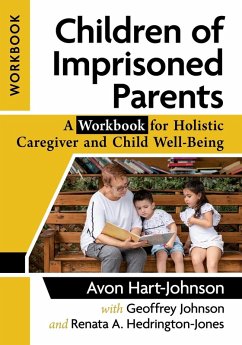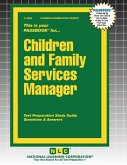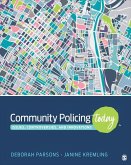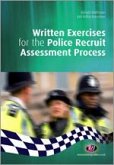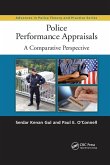Avon Hart-Johnson, Geoffrey Johnson, Renata A. Hedrington-Jones
Children of Imprisoned Parents
A Workbook for Holistic Caregiver and Child Well-Being
27,99 €
inkl. MwSt.
Erscheint vorauss. 5. Juni 2025

14 °P sammeln
Avon Hart-Johnson, Geoffrey Johnson, Renata A. Hedrington-Jones
Children of Imprisoned Parents
A Workbook for Holistic Caregiver and Child Well-Being
- Broschiertes Buch
- Merkliste
- Auf die Merkliste
- Bewerten Bewerten
- Teilen
- Produkt teilen
- Produkterinnerung
- Produkterinnerung
For too long, the adverse impacts of parental incarceration have remained in the shadows. This book, along with its companion volume, Children of Imprisoned Parents: A Guide to Holistic Caregiver and Child Well-Being (ISBN 978-1-4766-8716-2), illuminates the hidden challenges. Through an empowering journey, the authors help caregivers expand their understanding of children's stress-response systems, allowing them to recognize how anxiety and grief may manifest in a child's daily behaviors. This comprehensive workbook provides caregivers with a safe space to practice, role-play, and tailor…mehr
Andere Kunden interessierten sich auch für
![Parents at War Parents at War]() David BickertonParents at War18,99 €
David BickertonParents at War18,99 €![Children and Family Services Manager Children and Family Services Manager]() Children and Family Services Manager47,99 €
Children and Family Services Manager47,99 €![Policing in America Policing in America]() Larry K GainesPolicing in America115,99 €
Larry K GainesPolicing in America115,99 €![Community Policing Today Community Policing Today]() Deborah A ParsonsCommunity Policing Today184,99 €
Deborah A ParsonsCommunity Policing Today184,99 €![Written Exercises for the Police Recruit Assessment Process Written Exercises for the Police Recruit Assessment Process]() Richard MalthouseWritten Exercises for the Police Recruit Assessment Process36,99 €
Richard MalthouseWritten Exercises for the Police Recruit Assessment Process36,99 €![Police Performance Appraisals Police Performance Appraisals]() Serdar Kenan GulPolice Performance Appraisals62,99 €
Serdar Kenan GulPolice Performance Appraisals62,99 €![Effective Child Abuse Investigation for the Multi-Disciplinary Team Effective Child Abuse Investigation for the Multi-Disciplinary Team]() Bradley Richard GrahamEffective Child Abuse Investigation for the Multi-Disciplinary Team80,99 €
Bradley Richard GrahamEffective Child Abuse Investigation for the Multi-Disciplinary Team80,99 €-
-
-
For too long, the adverse impacts of parental incarceration have remained in the shadows. This book, along with its companion volume, Children of Imprisoned Parents: A Guide to Holistic Caregiver and Child Well-Being (ISBN 978-1-4766-8716-2), illuminates the hidden challenges. Through an empowering journey, the authors help caregivers expand their understanding of children's stress-response systems, allowing them to recognize how anxiety and grief may manifest in a child's daily behaviors. This comprehensive workbook provides caregivers with a safe space to practice, role-play, and tailor their responses to seemingly challenging situations typically associated with parental incarceration. Ultimately, users will learn how to forge strong connections between primary caregivers and their children. In a novel extension of the primary workbook content, the use of bibliotherapy-based children's books equips caregivers to better comprehend children's withdrawal, stigma, sadness, anger, and even perceived acting out in the home or classroom. Caregiver-led reading activities provide a perspective through which storybook characters show children that they are not alone in their circumstances.
Produktdetails
- Produktdetails
- Verlag: McFarland & Co Inc
- Seitenzahl: 171
- Erscheinungstermin: 5. Juni 2025
- Englisch
- Abmessung: 254mm x 178mm x 9mm
- ISBN-13: 9781476687179
- ISBN-10: 147668717X
- Artikelnr.: 73875967
- Herstellerkennzeichnung
- Libri GmbH
- Europaallee 1
- 36244 Bad Hersfeld
- gpsr@libri.de
- Verlag: McFarland & Co Inc
- Seitenzahl: 171
- Erscheinungstermin: 5. Juni 2025
- Englisch
- Abmessung: 254mm x 178mm x 9mm
- ISBN-13: 9781476687179
- ISBN-10: 147668717X
- Artikelnr.: 73875967
- Herstellerkennzeichnung
- Libri GmbH
- Europaallee 1
- 36244 Bad Hersfeld
- gpsr@libri.de
Avon Hart-Johnson is a dedicated researcher, scholar, and advocate at the forefront of social justice initiatives. Her books and journal publications focus on the intersection of mass incarceration and its profound effects on children, families, and communities. She also leads national and international coalitions, driving discussions on social change, human rights, and reparative justice. She is a contributing faculty member at Walden University. Geoffrey Alan Johnson possesses a distinctive combination of experience in law enforcement, research, and non-profit leadership. He bridges the gap between the demand for practical strategies in public policy, juvenile justice reform, and the promotion of structural changes in social justice. He is the author of handbooks on family member incarceration and has created children's books to help youth better grasp the related complexities. Renata A. Hedrington-Jones is a university educator and researcher focused on the role of social workers and human services professionals in helping families with reintegration after incarceration. Her work prepares families to build resilience. She is a principal researcher serving on multiple research teams.
Table of Contents
Preface
Note to Audience Users
Introduction
Part I. Caregiving and Children's Holistic Well-Being
Module 1. Understanding Caregiving and Children's Essential Needs
Section 1.0. Putting on the Caregiver Oxygen Mask, First
Section 1.1. Caregiving with Mindfulness
Section 1.2. Parenting Styles
Section 1.3. Caregiving and Managing Change
Module 2. Managing Loss and the Family
Section 2.0. Childhood Grief: "Does My Loss Even Matter?"
Section 2.1. Grief Work for Caregivers and Families
Section 2.2. Symbolic Attachments: Teddy's Gone
Section 2.3. Loss and Attachments
Module 3. Infants and Parental Incarceration
Section 3.0. Kangaroo Care: Infants and Reading Intervention
Section 3.1. Babies and Survival
Section 3.2. Attuned and Attached
Section 3.3. Parental Incarceration: Taking Inventory of the Impacts on
Babies
Module 4. Toddlerhood: The Brain, Body, and Stress
Section 4.0. Toddlers
Section 4.1. Sympathetic Parasympathetic: "The Doggie and Brain"
Section 4.2. Managing Internalized and Externalized Behaviors
Section 4.3. Fight or Flight: Jenny Is Nervous
Module 5. Cultivating Well-Being in Children
Section 5.0. Preschoolers: Children's Stories
Section 5.1. Being Social and Confident
Section 5.2. Protecting the Critical Window of Development
Section 5.3. The Roadmap to Recovery and Resilience
Module 6. Nurturing Self-Esteem in Children
Section 6.0. Middle Childhood: The Cape of Confidence
Section 6.1. Self Worth and Resilience
Section 6.2. Assimilating and Belonging
Section 6.3. Self-Appraisal, Shame, and Guilt
Module 7. Communication: "Lost for Words"
Section 7.0. Life Happens: The Big Talk
Section 7.1. Intra-Family Communication
Section 7.2. Communication Redo's: "Help, I Told My Child a Lie!"
Section 7.3. Boundaries and Family Privacy
Module 8. Ambiguous Roles
Section 8.0. Parents and Helpers
Section 8.1. Family Member Roles
Section 8.2. Mirror-Mirror Reflections
Section 8.3. Support Inventory
Module 9. The Importance of Play
Section 9.0. A Play Funeral: "The Military Man"
Section 9.1. The Power of Make Believe
Section 9.2. Play Interventions
Section 9.3. Reflection, What We Know: Play & Resilience
Part II. Tackling the Big Topics
Module 10. Offsetting Risks and Overcoming the Odds
Section 10.0. Risks and Protective Factors
Section 10.1. Reframing and Rewriting the Story
Section 10.2. Co-Parenting
Section 10.3. Let's Network: It Takes a Village!
Module 11. ACEs, Triggers, and Trauma
Section 11.0. Healing Trauma
Section 11.1. ACEs and Child Well-being
Section 11.2. Toxic Stressors
Section 11.3. We Have Superpowers
Module 12. Tough Topics: Suicide and Creating Safe Spaces
Section 12.0. Sudden Loss and Trauma Revisited
Section 12.1. Suicide Risks
Section 12.2. Home Safety
Section 12.3. Anti-bullying Perspectives
Module 13. Anger Management
Section 13.0. This Makes Me Angry
Section 13.1. Children Experiencing Anger
Section 13.2. Anger and Unmet Needs
Section 13.3. The Body Reacts to Anger
Module 14. No Shame
Section 14.0. Shame: The Wise Chicken
Section 14.1. Now Tell Me the Good News
Section14.2 Shaping Self-Worth and Self-Acceptance
Section 14.3. Crying Shame
Module 15. Silver Linings
Section 15.0. Rays of Hope
Section 15.1. Learned Hopefulness
Section 15.2. Embracing Vulnerability as a Strength
Section 15.3. Help Children to Write Their Stories
Part III. Storybooks and Bibliotherapy
Using Storybooks as Creative Interventions
Module 16. Baby Star Finds "Happy"
Section 16.0. Baby Star: Literacy, Child Development, and Comprehension
Module 17. Rocko's Guitar
Section 17.0. Rocko's Guitar: Literacy, Child Development, and
Comprehension
Module 18. Truth and the Big Dinner
Section 18.0. Truth and the Big Dinner: Literacy, Child Development, and
Comprehension
Module 19. Jamie's Big Visit
Section 19.0. Jamie's Big Visit: Literacy, Child Development, and
Comprehension
Module 20. Putting It All Together
Section 20.0. C-FRACS
Glossary
Appendix A. C-FRACS
Appendix B. Do's and Don'ts of Grief
Appendix C. Communication
Appendix D. Coloring Activity
Appendix E. Helping Children Deal with Loss
Appendix F. Caregiver Resources
Appendix G. Getting Support: What to Expect
Chapter Notes
References
Index
Preface
Note to Audience Users
Introduction
Part I. Caregiving and Children's Holistic Well-Being
Module 1. Understanding Caregiving and Children's Essential Needs
Section 1.0. Putting on the Caregiver Oxygen Mask, First
Section 1.1. Caregiving with Mindfulness
Section 1.2. Parenting Styles
Section 1.3. Caregiving and Managing Change
Module 2. Managing Loss and the Family
Section 2.0. Childhood Grief: "Does My Loss Even Matter?"
Section 2.1. Grief Work for Caregivers and Families
Section 2.2. Symbolic Attachments: Teddy's Gone
Section 2.3. Loss and Attachments
Module 3. Infants and Parental Incarceration
Section 3.0. Kangaroo Care: Infants and Reading Intervention
Section 3.1. Babies and Survival
Section 3.2. Attuned and Attached
Section 3.3. Parental Incarceration: Taking Inventory of the Impacts on
Babies
Module 4. Toddlerhood: The Brain, Body, and Stress
Section 4.0. Toddlers
Section 4.1. Sympathetic Parasympathetic: "The Doggie and Brain"
Section 4.2. Managing Internalized and Externalized Behaviors
Section 4.3. Fight or Flight: Jenny Is Nervous
Module 5. Cultivating Well-Being in Children
Section 5.0. Preschoolers: Children's Stories
Section 5.1. Being Social and Confident
Section 5.2. Protecting the Critical Window of Development
Section 5.3. The Roadmap to Recovery and Resilience
Module 6. Nurturing Self-Esteem in Children
Section 6.0. Middle Childhood: The Cape of Confidence
Section 6.1. Self Worth and Resilience
Section 6.2. Assimilating and Belonging
Section 6.3. Self-Appraisal, Shame, and Guilt
Module 7. Communication: "Lost for Words"
Section 7.0. Life Happens: The Big Talk
Section 7.1. Intra-Family Communication
Section 7.2. Communication Redo's: "Help, I Told My Child a Lie!"
Section 7.3. Boundaries and Family Privacy
Module 8. Ambiguous Roles
Section 8.0. Parents and Helpers
Section 8.1. Family Member Roles
Section 8.2. Mirror-Mirror Reflections
Section 8.3. Support Inventory
Module 9. The Importance of Play
Section 9.0. A Play Funeral: "The Military Man"
Section 9.1. The Power of Make Believe
Section 9.2. Play Interventions
Section 9.3. Reflection, What We Know: Play & Resilience
Part II. Tackling the Big Topics
Module 10. Offsetting Risks and Overcoming the Odds
Section 10.0. Risks and Protective Factors
Section 10.1. Reframing and Rewriting the Story
Section 10.2. Co-Parenting
Section 10.3. Let's Network: It Takes a Village!
Module 11. ACEs, Triggers, and Trauma
Section 11.0. Healing Trauma
Section 11.1. ACEs and Child Well-being
Section 11.2. Toxic Stressors
Section 11.3. We Have Superpowers
Module 12. Tough Topics: Suicide and Creating Safe Spaces
Section 12.0. Sudden Loss and Trauma Revisited
Section 12.1. Suicide Risks
Section 12.2. Home Safety
Section 12.3. Anti-bullying Perspectives
Module 13. Anger Management
Section 13.0. This Makes Me Angry
Section 13.1. Children Experiencing Anger
Section 13.2. Anger and Unmet Needs
Section 13.3. The Body Reacts to Anger
Module 14. No Shame
Section 14.0. Shame: The Wise Chicken
Section 14.1. Now Tell Me the Good News
Section14.2 Shaping Self-Worth and Self-Acceptance
Section 14.3. Crying Shame
Module 15. Silver Linings
Section 15.0. Rays of Hope
Section 15.1. Learned Hopefulness
Section 15.2. Embracing Vulnerability as a Strength
Section 15.3. Help Children to Write Their Stories
Part III. Storybooks and Bibliotherapy
Using Storybooks as Creative Interventions
Module 16. Baby Star Finds "Happy"
Section 16.0. Baby Star: Literacy, Child Development, and Comprehension
Module 17. Rocko's Guitar
Section 17.0. Rocko's Guitar: Literacy, Child Development, and
Comprehension
Module 18. Truth and the Big Dinner
Section 18.0. Truth and the Big Dinner: Literacy, Child Development, and
Comprehension
Module 19. Jamie's Big Visit
Section 19.0. Jamie's Big Visit: Literacy, Child Development, and
Comprehension
Module 20. Putting It All Together
Section 20.0. C-FRACS
Glossary
Appendix A. C-FRACS
Appendix B. Do's and Don'ts of Grief
Appendix C. Communication
Appendix D. Coloring Activity
Appendix E. Helping Children Deal with Loss
Appendix F. Caregiver Resources
Appendix G. Getting Support: What to Expect
Chapter Notes
References
Index
Table of Contents
Preface
Note to Audience Users
Introduction
Part I. Caregiving and Children's Holistic Well-Being
Module 1. Understanding Caregiving and Children's Essential Needs
Section 1.0. Putting on the Caregiver Oxygen Mask, First
Section 1.1. Caregiving with Mindfulness
Section 1.2. Parenting Styles
Section 1.3. Caregiving and Managing Change
Module 2. Managing Loss and the Family
Section 2.0. Childhood Grief: "Does My Loss Even Matter?"
Section 2.1. Grief Work for Caregivers and Families
Section 2.2. Symbolic Attachments: Teddy's Gone
Section 2.3. Loss and Attachments
Module 3. Infants and Parental Incarceration
Section 3.0. Kangaroo Care: Infants and Reading Intervention
Section 3.1. Babies and Survival
Section 3.2. Attuned and Attached
Section 3.3. Parental Incarceration: Taking Inventory of the Impacts on
Babies
Module 4. Toddlerhood: The Brain, Body, and Stress
Section 4.0. Toddlers
Section 4.1. Sympathetic Parasympathetic: "The Doggie and Brain"
Section 4.2. Managing Internalized and Externalized Behaviors
Section 4.3. Fight or Flight: Jenny Is Nervous
Module 5. Cultivating Well-Being in Children
Section 5.0. Preschoolers: Children's Stories
Section 5.1. Being Social and Confident
Section 5.2. Protecting the Critical Window of Development
Section 5.3. The Roadmap to Recovery and Resilience
Module 6. Nurturing Self-Esteem in Children
Section 6.0. Middle Childhood: The Cape of Confidence
Section 6.1. Self Worth and Resilience
Section 6.2. Assimilating and Belonging
Section 6.3. Self-Appraisal, Shame, and Guilt
Module 7. Communication: "Lost for Words"
Section 7.0. Life Happens: The Big Talk
Section 7.1. Intra-Family Communication
Section 7.2. Communication Redo's: "Help, I Told My Child a Lie!"
Section 7.3. Boundaries and Family Privacy
Module 8. Ambiguous Roles
Section 8.0. Parents and Helpers
Section 8.1. Family Member Roles
Section 8.2. Mirror-Mirror Reflections
Section 8.3. Support Inventory
Module 9. The Importance of Play
Section 9.0. A Play Funeral: "The Military Man"
Section 9.1. The Power of Make Believe
Section 9.2. Play Interventions
Section 9.3. Reflection, What We Know: Play & Resilience
Part II. Tackling the Big Topics
Module 10. Offsetting Risks and Overcoming the Odds
Section 10.0. Risks and Protective Factors
Section 10.1. Reframing and Rewriting the Story
Section 10.2. Co-Parenting
Section 10.3. Let's Network: It Takes a Village!
Module 11. ACEs, Triggers, and Trauma
Section 11.0. Healing Trauma
Section 11.1. ACEs and Child Well-being
Section 11.2. Toxic Stressors
Section 11.3. We Have Superpowers
Module 12. Tough Topics: Suicide and Creating Safe Spaces
Section 12.0. Sudden Loss and Trauma Revisited
Section 12.1. Suicide Risks
Section 12.2. Home Safety
Section 12.3. Anti-bullying Perspectives
Module 13. Anger Management
Section 13.0. This Makes Me Angry
Section 13.1. Children Experiencing Anger
Section 13.2. Anger and Unmet Needs
Section 13.3. The Body Reacts to Anger
Module 14. No Shame
Section 14.0. Shame: The Wise Chicken
Section 14.1. Now Tell Me the Good News
Section14.2 Shaping Self-Worth and Self-Acceptance
Section 14.3. Crying Shame
Module 15. Silver Linings
Section 15.0. Rays of Hope
Section 15.1. Learned Hopefulness
Section 15.2. Embracing Vulnerability as a Strength
Section 15.3. Help Children to Write Their Stories
Part III. Storybooks and Bibliotherapy
Using Storybooks as Creative Interventions
Module 16. Baby Star Finds "Happy"
Section 16.0. Baby Star: Literacy, Child Development, and Comprehension
Module 17. Rocko's Guitar
Section 17.0. Rocko's Guitar: Literacy, Child Development, and
Comprehension
Module 18. Truth and the Big Dinner
Section 18.0. Truth and the Big Dinner: Literacy, Child Development, and
Comprehension
Module 19. Jamie's Big Visit
Section 19.0. Jamie's Big Visit: Literacy, Child Development, and
Comprehension
Module 20. Putting It All Together
Section 20.0. C-FRACS
Glossary
Appendix A. C-FRACS
Appendix B. Do's and Don'ts of Grief
Appendix C. Communication
Appendix D. Coloring Activity
Appendix E. Helping Children Deal with Loss
Appendix F. Caregiver Resources
Appendix G. Getting Support: What to Expect
Chapter Notes
References
Index
Preface
Note to Audience Users
Introduction
Part I. Caregiving and Children's Holistic Well-Being
Module 1. Understanding Caregiving and Children's Essential Needs
Section 1.0. Putting on the Caregiver Oxygen Mask, First
Section 1.1. Caregiving with Mindfulness
Section 1.2. Parenting Styles
Section 1.3. Caregiving and Managing Change
Module 2. Managing Loss and the Family
Section 2.0. Childhood Grief: "Does My Loss Even Matter?"
Section 2.1. Grief Work for Caregivers and Families
Section 2.2. Symbolic Attachments: Teddy's Gone
Section 2.3. Loss and Attachments
Module 3. Infants and Parental Incarceration
Section 3.0. Kangaroo Care: Infants and Reading Intervention
Section 3.1. Babies and Survival
Section 3.2. Attuned and Attached
Section 3.3. Parental Incarceration: Taking Inventory of the Impacts on
Babies
Module 4. Toddlerhood: The Brain, Body, and Stress
Section 4.0. Toddlers
Section 4.1. Sympathetic Parasympathetic: "The Doggie and Brain"
Section 4.2. Managing Internalized and Externalized Behaviors
Section 4.3. Fight or Flight: Jenny Is Nervous
Module 5. Cultivating Well-Being in Children
Section 5.0. Preschoolers: Children's Stories
Section 5.1. Being Social and Confident
Section 5.2. Protecting the Critical Window of Development
Section 5.3. The Roadmap to Recovery and Resilience
Module 6. Nurturing Self-Esteem in Children
Section 6.0. Middle Childhood: The Cape of Confidence
Section 6.1. Self Worth and Resilience
Section 6.2. Assimilating and Belonging
Section 6.3. Self-Appraisal, Shame, and Guilt
Module 7. Communication: "Lost for Words"
Section 7.0. Life Happens: The Big Talk
Section 7.1. Intra-Family Communication
Section 7.2. Communication Redo's: "Help, I Told My Child a Lie!"
Section 7.3. Boundaries and Family Privacy
Module 8. Ambiguous Roles
Section 8.0. Parents and Helpers
Section 8.1. Family Member Roles
Section 8.2. Mirror-Mirror Reflections
Section 8.3. Support Inventory
Module 9. The Importance of Play
Section 9.0. A Play Funeral: "The Military Man"
Section 9.1. The Power of Make Believe
Section 9.2. Play Interventions
Section 9.3. Reflection, What We Know: Play & Resilience
Part II. Tackling the Big Topics
Module 10. Offsetting Risks and Overcoming the Odds
Section 10.0. Risks and Protective Factors
Section 10.1. Reframing and Rewriting the Story
Section 10.2. Co-Parenting
Section 10.3. Let's Network: It Takes a Village!
Module 11. ACEs, Triggers, and Trauma
Section 11.0. Healing Trauma
Section 11.1. ACEs and Child Well-being
Section 11.2. Toxic Stressors
Section 11.3. We Have Superpowers
Module 12. Tough Topics: Suicide and Creating Safe Spaces
Section 12.0. Sudden Loss and Trauma Revisited
Section 12.1. Suicide Risks
Section 12.2. Home Safety
Section 12.3. Anti-bullying Perspectives
Module 13. Anger Management
Section 13.0. This Makes Me Angry
Section 13.1. Children Experiencing Anger
Section 13.2. Anger and Unmet Needs
Section 13.3. The Body Reacts to Anger
Module 14. No Shame
Section 14.0. Shame: The Wise Chicken
Section 14.1. Now Tell Me the Good News
Section14.2 Shaping Self-Worth and Self-Acceptance
Section 14.3. Crying Shame
Module 15. Silver Linings
Section 15.0. Rays of Hope
Section 15.1. Learned Hopefulness
Section 15.2. Embracing Vulnerability as a Strength
Section 15.3. Help Children to Write Their Stories
Part III. Storybooks and Bibliotherapy
Using Storybooks as Creative Interventions
Module 16. Baby Star Finds "Happy"
Section 16.0. Baby Star: Literacy, Child Development, and Comprehension
Module 17. Rocko's Guitar
Section 17.0. Rocko's Guitar: Literacy, Child Development, and
Comprehension
Module 18. Truth and the Big Dinner
Section 18.0. Truth and the Big Dinner: Literacy, Child Development, and
Comprehension
Module 19. Jamie's Big Visit
Section 19.0. Jamie's Big Visit: Literacy, Child Development, and
Comprehension
Module 20. Putting It All Together
Section 20.0. C-FRACS
Glossary
Appendix A. C-FRACS
Appendix B. Do's and Don'ts of Grief
Appendix C. Communication
Appendix D. Coloring Activity
Appendix E. Helping Children Deal with Loss
Appendix F. Caregiver Resources
Appendix G. Getting Support: What to Expect
Chapter Notes
References
Index
